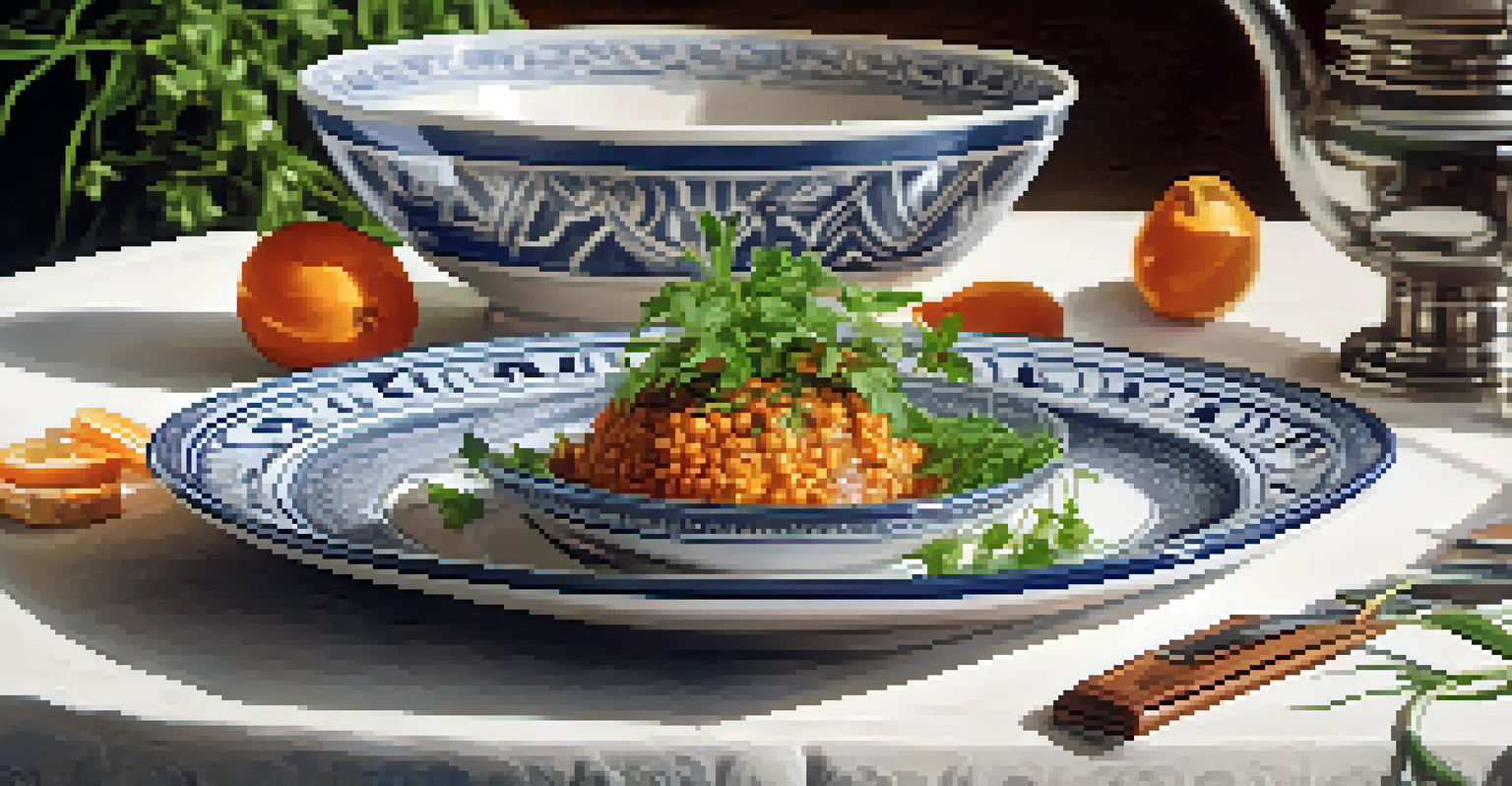The Importance of Heritage Food Preservation in Modern Society

Understanding Heritage Foods and Their Significance
Heritage foods are traditional dishes that reflect the history and culture of a community. These foods often use unique recipes and local ingredients passed down through generations. By understanding these foods, we gain insight into the values and practices of our ancestors.
Food is our common ground, a universal experience.
In a world increasingly dominated by fast food and mass production, heritage foods serve as a reminder of our culinary roots. They connect us to our families and heritage, offering a sense of belonging and identity. Each dish tells a story, enriching our lives with flavors of the past.
Preserving these foods is not just about keeping recipes alive; it's about maintaining cultural diversity. Each cuisine contributes to the global tapestry of food, showcasing different flavors, techniques, and traditions that deserve to be celebrated.
The Role of Heritage Foods in Cultural Identity
Heritage foods play a crucial role in shaping cultural identity, allowing communities to express who they are. When families gather to prepare traditional dishes, they share not only food but also stories and values. This practice strengthens bonds and fosters a sense of community.

For many, cooking and sharing heritage foods is a way to honor their ancestors and keep their memories alive. It’s a living tradition that connects generations, ensuring that younger family members understand their roots. This connection is vital in a rapidly changing world.
Heritage Foods Reflect Cultural Identity
Heritage foods connect communities to their history and values, fostering a sense of belonging through shared culinary traditions.
Moreover, heritage foods can serve as a bridge between diverse cultures. By sharing and enjoying foods from different backgrounds, we cultivate understanding and appreciation for one another, enriching our social fabric.
Health Benefits of Heritage Foods
Heritage foods often emphasize local and seasonal ingredients, which can lead to healthier eating habits. Unlike processed foods, these dishes are typically made from fresh produce and whole grains, contributing to better nutrition. This focus on natural ingredients can enhance overall well-being.
Heritage is what makes you unique. It’s what connects you to your ancestors and to your culture.
Many traditional recipes include herbs and spices that offer medicinal properties. For example, turmeric, commonly used in Indian cuisine, has anti-inflammatory benefits. By incorporating these heritage foods into our diets, we can tap into centuries of culinary wisdom for improved health.
Additionally, the preparation methods used in heritage cooking often prioritize slow cooking and fermentation, which can aid digestion. These techniques have been passed down through generations, proving that our ancestors understood the importance of nutritious food long before modern dietary trends emerged.
Economic Benefits of Heritage Food Preservation
Preserving heritage foods can significantly boost local economies. By promoting traditional dishes, communities can attract tourism, encouraging visitors to explore regional cuisine. This not only creates jobs but also fosters a sense of pride in local culture.
Moreover, heritage food preservation often involves small-scale farming and local markets. This supports local farmers and artisans, creating a sustainable food system that benefits everyone. Investing in these practices helps maintain the landscape and biodiversity of our regions.
Health Benefits of Traditional Recipes
Traditional heritage foods often utilize fresh, local ingredients and time-honored cooking methods that contribute to better nutrition and overall well-being.
As consumers increasingly seek authentic experiences, heritage foods can become a unique selling point. Restaurants and food businesses that embrace traditional recipes often find success in a market hungry for authenticity and connection to the past.
Challenges in Heritage Food Preservation
Despite its importance, heritage food preservation faces numerous challenges. Rapid urbanization and globalization threaten traditional food practices, as people increasingly turn to convenience over culture. This shift can lead to the loss of unique recipes and culinary techniques.
Additionally, younger generations may not be as interested in learning traditional cooking methods, often preferring fast, modern meals. As a result, the skills needed to prepare heritage foods can vanish, leading to a cultural disconnect. It’s crucial to engage youth in these culinary traditions to keep them alive.
Furthermore, the commercialization of food can dilute authentic recipes, transforming them into something unrecognizable. This trend can undermine the very essence of heritage foods, making it essential for communities to prioritize preservation efforts.
The Role of Technology in Food Preservation
Technology plays a dual role in heritage food preservation, offering both challenges and opportunities. On one hand, modern conveniences can lead to the erosion of traditional practices. On the other hand, technology can help document, share, and promote these culinary traditions.
Digital platforms allow families to record and share their recipes, ensuring that they are not lost to time. Social media can raise awareness about heritage foods, connecting chefs, farmers, and consumers interested in preserving these culinary practices. This can help generate a community of support for traditional foods.
Challenges in Preserving Culinary Traditions
Rapid urbanization and changing preferences among younger generations pose significant threats to the preservation of heritage food practices and recipes.
Additionally, technology can aid in the sustainable farming and production of heritage ingredients. Innovations in farming techniques can help maintain biodiversity, ensuring that traditional crops are cultivated and available for future generations.
Steps to Preserve Heritage Foods in Your Community
Getting involved in heritage food preservation can be as simple as starting in your own kitchen. Try cooking traditional recipes from your family or local culture, and share these dishes with friends and family. This not only keeps the recipes alive but can inspire others to do the same.
Support local farmers and markets that prioritize heritage crops and traditional food practices. Purchasing ingredients from these sources helps sustain local economies and encourages the continued cultivation of unique foods. You might even discover new favorite dishes along the way!

Finally, consider joining or forming community groups focused on heritage food preservation. These groups can host cooking classes, recipe exchanges, and food festivals, fostering a greater appreciation for traditional foods. Together, we can ensure that our culinary heritage thrives in the modern world.